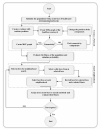Performance Analysis of IoT-Based Health and Environment WSN Deployment
- PMID: 33092224
- PMCID: PMC7590066
- DOI: 10.3390/s20205923
Performance Analysis of IoT-Based Health and Environment WSN Deployment
Abstract
With the development of Internet of Things (IoT) applications, applying the potential and benefits of IoT technology in the health and environment services is increasing to improve the service quality using sensors and devices. This paper aims to apply GIS-based optimization algorithms for optimizing IoT-based network deployment through the use of wireless sensor networks (WSNs) and smart connected sensors for environmental and health applications. First, the WSN deployment research studies in health and environment applications are reviewed including fire monitoring, precise agriculture, telemonitoring, smart home, and hospital. Second, the WSN deployment process is modeled to optimize two conflict objectives, coverage and lifetime, by applying Minimum Spanning Tree (MST) routing protocol with minimum total network lengths. Third, the performance of the Bees Algorithm (BA) and Particle Swarm Optimization (PSO) algorithms are compared for the evaluation of GIS-based WSN deployment in health and environment applications. The algorithms were compared using convergence rate, constancy repeatability, and modeling complexity criteria. The results showed that the PSO algorithm converged to higher values of objective functions gradually while BA found better fitness values and was faster in the first iterations. The levels of stability and repeatability were high with 0.0150 of standard deviation for PSO and 0.0375 for BA. The PSO also had lower complexity than BA. Therefore, the PSO algorithm obtained better performance for IoT-based sensor network deployment.
Keywords: Bees Algorithm; IoT; Minimum Spanning Tree; PSO algorithm; coverage; health and environment applications; lifetime; wireless sensor network deployment.
Conflict of interest statement
The authors declare no conflict of interest.
Figures








References
-
- Islam S.M.R., Kwak D., Kabir M.H., Hossain M., Kwak K.S. The Internet of Things for Healthcare: A Comprehensive Survey. IEEE Access. 2015;3:678–708. doi: 10.1109/ACCESS.2015.2437951. - DOI
-
- Wu J., Guo S., Huang H., Liu W., Xiang Y. Information and Communications Technologies for Sustainable Development Goals: State-of-the-Art, Needs and Perspectives. IEEE Commun. Surv. Tutor. 2018;20:2389–2406. doi: 10.1109/COMST.2018.2812301. - DOI
-
- Dziak D., Jachimczyk B., Kulesza W.J. Wirelessly Interfacing Objects and Subjects of Healthcare System—IoT Approach. Elektron. Elektrotechnika. 2016;22:66–73. doi: 10.5755/j01.eie.22.3.15317. - DOI
Publication types
MeSH terms
Grants and funding
LinkOut - more resources
Full Text Sources

